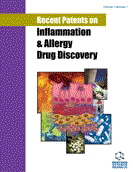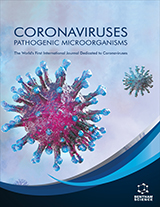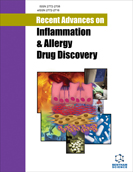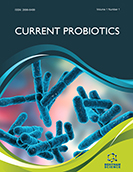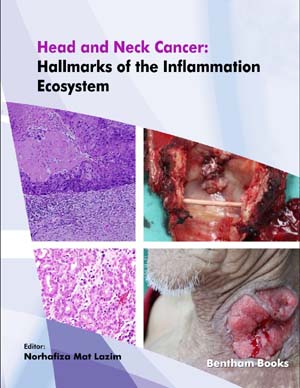Abstract
Discovery of small molecular inhibitors for treatment of rheumatoid arthritis is a major ongoing effort within the pharmaceutical industry. Spleen tyrosine kinase (SYK) is one of leading small molecular targets with regard to clinical development primarlly due to efforts by Rigel and Portola. In this review, we provide a comprehensive overview of the SYK patent landscape. The patent literature we evaluated relates to any organization that has filed applications that imply that SYK is the intended target. The interest in SYK was initiated in the early 2000’s with many organizations, including several large pharmaceutical companies, and has been active for years. In general, the structural theme of most of the compounds in these applications is a traditional ATP competitive inhibitor with each organization having a different hinge binding element. In general, the attachment to the hinge is an aryl amine that is decorated with a solubilizing group. The other substituents are broadly variable across the numerous companies indicating that SYK has significant flexibility in its interactions in that portion of the kinase. This overview of the SYK patent literature and the learnings of the inhibitors’ substitution patterns would be an important reference for anyone working in this area.
Keywords: Anti-inflammatory pathway, non-receptor tyrosine kinase, rheumatoid arthritis, SYK, SYK inhibitor, SYK-patents
Recent Patents on Inflammation & Allergy Drug Discovery
Title:The 2010 Patent Landscape for Spleen Tyrosine Kinase Inhibitors+
Volume: 6 Issue: 2
Author(s): Alessandro F. Moretto, Christoph Dehnhardt, Neelu Kaila, Nikolaos Papaioannou and Atli Thorarensen
Affiliation:
Keywords: Anti-inflammatory pathway, non-receptor tyrosine kinase, rheumatoid arthritis, SYK, SYK inhibitor, SYK-patents
Abstract: Discovery of small molecular inhibitors for treatment of rheumatoid arthritis is a major ongoing effort within the pharmaceutical industry. Spleen tyrosine kinase (SYK) is one of leading small molecular targets with regard to clinical development primarlly due to efforts by Rigel and Portola. In this review, we provide a comprehensive overview of the SYK patent landscape. The patent literature we evaluated relates to any organization that has filed applications that imply that SYK is the intended target. The interest in SYK was initiated in the early 2000’s with many organizations, including several large pharmaceutical companies, and has been active for years. In general, the structural theme of most of the compounds in these applications is a traditional ATP competitive inhibitor with each organization having a different hinge binding element. In general, the attachment to the hinge is an aryl amine that is decorated with a solubilizing group. The other substituents are broadly variable across the numerous companies indicating that SYK has significant flexibility in its interactions in that portion of the kinase. This overview of the SYK patent literature and the learnings of the inhibitors’ substitution patterns would be an important reference for anyone working in this area.
Export Options
About this article
Cite this article as:
F. Moretto Alessandro, Dehnhardt Christoph, Kaila Neelu, Papaioannou Nikolaos and Thorarensen Atli, The 2010 Patent Landscape for Spleen Tyrosine Kinase Inhibitors+, Recent Patents on Inflammation & Allergy Drug Discovery 2012; 6 (2) . https://dx.doi.org/10.2174/187221312800166895
| DOI https://dx.doi.org/10.2174/187221312800166895 |
Print ISSN 1872-213X |
| Publisher Name Bentham Science Publisher |
Online ISSN 2212-2710 |
 14
14Related Articles
-
Multi-Kinase Inhibitors
Current Medicinal Chemistry Clearance of Amyloid-β Peptide Across the Choroid Plexus in Alzheimer's Disease
Current Aging Science Immunomodulatory Drugs as a Therapy for Multiple Myeloma
Current Pharmaceutical Biotechnology Proteoglycans in Inflammation
Current Medicinal Chemistry - Anti-Inflammatory & Anti-Allergy Agents Induction of CYP1A1. The AhR / DRE Paradigm Transcription, Receptor Regulation, and Expanding Biological Roles
Current Drug Metabolism [TIC4]Endomorphins, Analogues of Endomorphins, Have Significantly Enhanced Vasorelaxant Effects in Rat Aorta Rings
Protein & Peptide Letters Comparative Gene Expression Study to Identify Genes Possibly Related to Storage Root Formation in Cassava
Protein & Peptide Letters Drug Discovery and Design for Complex Diseases through QSAR Computational Methods
Current Pharmaceutical Design Oxidative and Nitrosative Stress and Immune-inflammatory Pathways in Patients with Myalgic Encephalomyelitis (ME)/Chronic Fatigue Syndrome (CFS)
Current Neuropharmacology Antihypertensive Properties of Angiotensin-Converting Enzyme Inhibitors (ACEI) Independent of the Renin-Angiotensin System
Current Hypertension Reviews Involvement of the Transforming Growth Factor β in the Pathogenesis of Hereditary Hemorrhagic Telangiectasia
Current Pharmaceutical Design Phage-Displayed Combinatorial Peptide Libraries in Fusion to β-Lactamase as Reporter for an Accelerated Clone Screening: Potential Uses of Selected Enzyme-Linked Affinity Reagents in Downstream Applications
Combinatorial Chemistry & High Throughput Screening VDAC-Targeted Drugs Affecting Cytoprotection and Mitochondrial Physiology in Cerebrovascular and Cardiovascular Diseases
Current Medicinal Chemistry A Dig Deep to Scout the Pharmacological and Clinical Facet of Garlic (<i>Allium sativum</i>)
Current Traditional Medicine Hsp70s and J Proteins of Plasmodium Parasites Infecting Rodents and Primates: Structure, Function, Clinical Relevance, and Drug Targets
Current Pharmaceutical Design Eco-friendly Synthesis of Pyrido[2,3-d]pyrimidine Analogs and Their Anticancer and Tyrosine Kinase Inhibition Activities
Anti-Cancer Agents in Medicinal Chemistry Tryptophan Catabolites and Migraine
Current Pharmaceutical Design State of Research Tracks and Property Protection of Photodynamic Sensitizers and Delivery Methodologies
Recent Patents on Chemical Engineering Phytochemical Therapies in Vascular Functioning: A Molecular Approach
Current Vascular Pharmacology Zebrafish: Predictive Model for Targeted Cancer Therapeutics from Nature
Current Cancer Drug Targets


